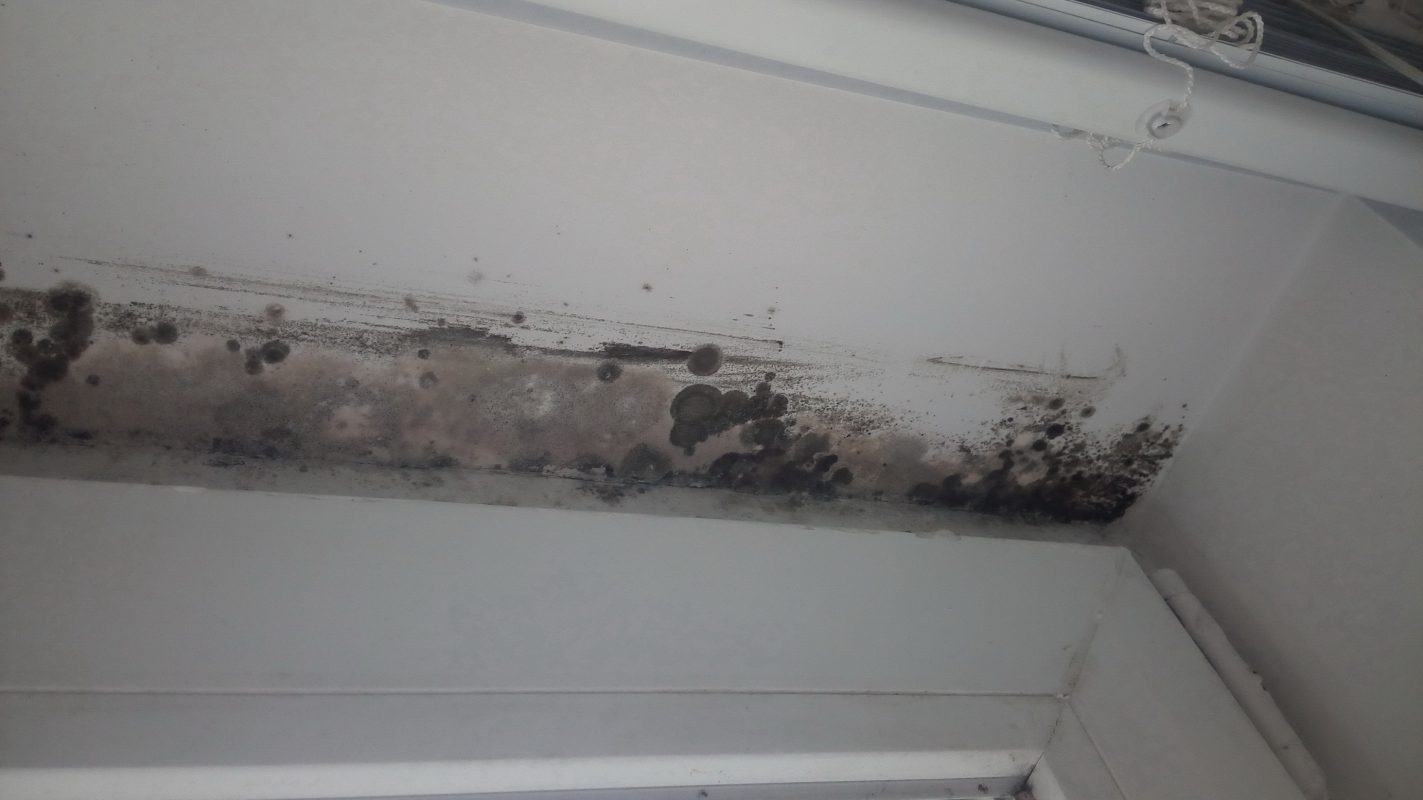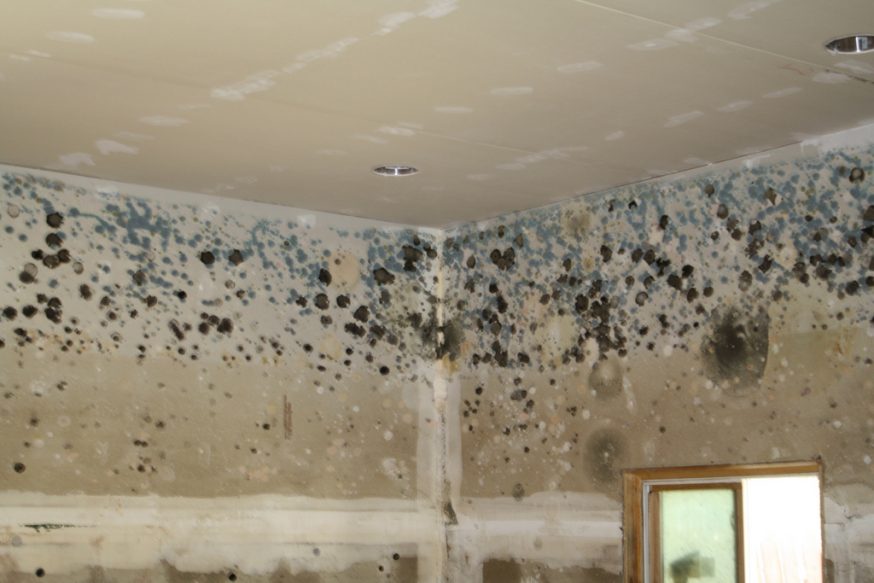7 Ways to Prevent Winter Mold and Mildew in Your House
 The wet and cold season, especially the winter months, are the best time for mold and mildew to appear, grow, and spread. Poor ventilation, increased heating, the combination of heating and the cold air that comes in, possible air leaks, and similar issues, create optimal conditions for increased spore activity, resulting in mold and mildew appearing and reproducing in your home. If you’ve noticed some discoloration or a shadow that keeps growing on your windowsills or small spots and discoloration on your walls, then you probably have a problem with excessive moisture and condensation, which can lead to more serious problems with mold and mildew. Apart from structural damages to your home, they can also cause health issues such as increased off-season allergic reactions, stuffy nose, sneezing, itchy eyes, or even problems with lungs and breathing. In order to prevent all of these issues and spare yourself the high costs of mold removal, it is important to take proper steps when winter comes and create an indoor environment where mold won’t have the opportunity to grow. We will help you understand the main causes of mold and discuss seven great and proven ways of preventing it during winter months.
The wet and cold season, especially the winter months, are the best time for mold and mildew to appear, grow, and spread. Poor ventilation, increased heating, the combination of heating and the cold air that comes in, possible air leaks, and similar issues, create optimal conditions for increased spore activity, resulting in mold and mildew appearing and reproducing in your home. If you’ve noticed some discoloration or a shadow that keeps growing on your windowsills or small spots and discoloration on your walls, then you probably have a problem with excessive moisture and condensation, which can lead to more serious problems with mold and mildew. Apart from structural damages to your home, they can also cause health issues such as increased off-season allergic reactions, stuffy nose, sneezing, itchy eyes, or even problems with lungs and breathing. In order to prevent all of these issues and spare yourself the high costs of mold removal, it is important to take proper steps when winter comes and create an indoor environment where mold won’t have the opportunity to grow. We will help you understand the main causes of mold and discuss seven great and proven ways of preventing it during winter months.
What Contributes to Increased Mold and Mildew Growth in Winter?
Mold and mildew spores are more or less everywhere in smaller or bigger quantities. They can even be found in the air we breathe. But issues come up only when those spores start to reproduce and spread in one space, growing in number inside your home. Mold and mildew proliferation is known to increase during winter months, with the beginning of colder weather, due to greater differences between inside and outside temperatures. When it’s cold outside we tend to turn up our heating to make our indoors warmer and more comfortable. However, when we do that, areas such as windows or outside walls can stay cooler that your indoor temperature, due to a number of reasons. This difference in temperatures then leads to condensation, resulting in moisture build-up on your windows or walls, and higher humidity levels. And moisture and humidity are the perfect breeding ground for mold and mildew. Many other factors can contribute to condensation and moisture build-up, such as different leaks that can occur due to broken or frozen pipes during winter, poor air ventilation, poor insulation, and others, so let’s take a look at how to tackle some of the main problems and stay ahead of mold and mildew growth. 
1. Use Exhaust Fans
Kitchens and bathrooms can be the perfect areas for mold reproduction as a lot of moisture tends to build up in these areas. While you cook, there is usually a lot of steam coming from your oven area, as well as in the bathroom when you take a shower or a bath, which you can even notice as your mirror will be blurred by the steam. All of that steam then condenses and turns into moisture. In order to prevent that condensation and moisture build-up, it is important to turn on your exhaust fans in the oven hood while you cook and in the bathroom while you shower. It is even recommended to leave them on for about 20-30 minutes after you’re done and wipe off any moisture that forms on your walls.
2. Improve Air Circulation
Improving and increasing the levels of air circulation indoors will help to significantly reduce the amount of moisture in your home. There are several ways you can do it and the easiest one is to simply open the windows from time to time for a few minutes, which will prevent condensation. Apart from that, if you have ceiling fans, turning them on will help the air circulate better, but remember to set them in reverse (clockwise), as that is the optimal “winter mode.” This will draw the room air up and bring the warm air down and out towards the walls. If either option doesn’t work for your particular home or area, then you can also purchase a dehumidifier, which can be bought at affordable prices and which will reduce the overall levels of moisture indoors.
3. Improve Insulation and Install Double-Glazed Windows
Properly insulated walls and windows will prevent greater temperature differences, i.e. the insulation will prevent the windows and walls from getting too cold and prone to condensation. Double-glazed windows will help maintain optimal indoor temperatures and will not get as cold as single-glazed ones and, therefore, will not condensate and produce moisture. Insulation and double-glazed windows may be bigger and more costly investments, but it is the smart thing to do for the long run. It will help prevent all potential moisture issues, and with it, mold and mildew growth, and they will pay off on their own as you will also decrease your energy consumption and heating bills.
4. Avoid Heavy Curtains
Some people opt for heavy curtains and drapes when they have single-glazed windows. It functions as a kind of replacement for double-glazed ones. However, even though they can help prevent heat loss and reduce your heating costs, they can also induce condensation. When you put those curtains in front of the windows you are actually stopping the warm air from reaching them, which will result in colder windows and higher chances of condensation, moisture, and mold.
5. Properly Store Items that Decompose Easily
This may not have crossed your mind, but storing certain things, such as books, papers, boxes or clothing can also be important as these things are prone to mold and mildew, i.e. mold finds fertile ground in them to reproduce. Therefore, try storing them in areas that are further away from the windows and external walls which are prone to condensation and put them in areas with more air circulation.
6. Pay Attention to Possible Leaks and Repair Them on Time
Small, undetected leaks can lead to greater damages, as well as mold and mildew growth, as moisture is the ideal place for them to develop. Some of the most common areas where leaks can occur are around windows and doors, as well as roofs and skylights. Leaks from roofs and skylights can usually be detected by the spots and stains on the ceiling or small drippings. Apart from that, leaks can also hide in your plumbing and pipes, so make sure to inspect all your indoor plumbing and look for some hidden leaks that can occur under the sinks, for example. It is important to take care of these issues as soon as possible in order to prevent greater issues. The best thing to do is to act preventively and have an inspection of these areas before the winter comes in order to deal with all problems on time. The longer the leak goes undetected, the higher your chances are of experiencing mold and damages that come with it.
7. Maintain Dry Floor Surfaces
If you have problems with moisture in your home, we recommend you get rid of your wall-to-wall carpets, as they can be hard to maintain and clean. They absorb moisture more easily and that moisture is then hard to notice, especially if you don’t check them and underneath them regularly. This is especially problematic when it comes to entryways. During winter and wet seasons, it is the entryways that constantly track in moisture, which then easily leads to mold growth. The solution to this can be simply getting rid of the carpeting and using some smaller area rugs that are easily cleaned and dried. Apart from that, it is recommended to install a washable floor surface, when and if possible. If you do have wall-to-wall carpeting, we recommend vacuuming them regularly, especially the entryway area, as well as regularly inspecting the baseboards and the areas where your carp et meets the wall for signs of mold.
Prevention Is the Best Medicine
As with many things in life, prevention is the best medicine here. Taking these steps to prevent moisture and the resulting mold and mildew growth in your home during winter will save you a lot of trouble, a lot of worrying, a lot of money, as well as many health risks. When the problem is already there, there are very few things you can do on your own to resolve it or mitigate it. Mold and mildew are known to appear and spread fast and the only way to get rid of it thoroughly and successfully is by hiring a mold removal specialist.